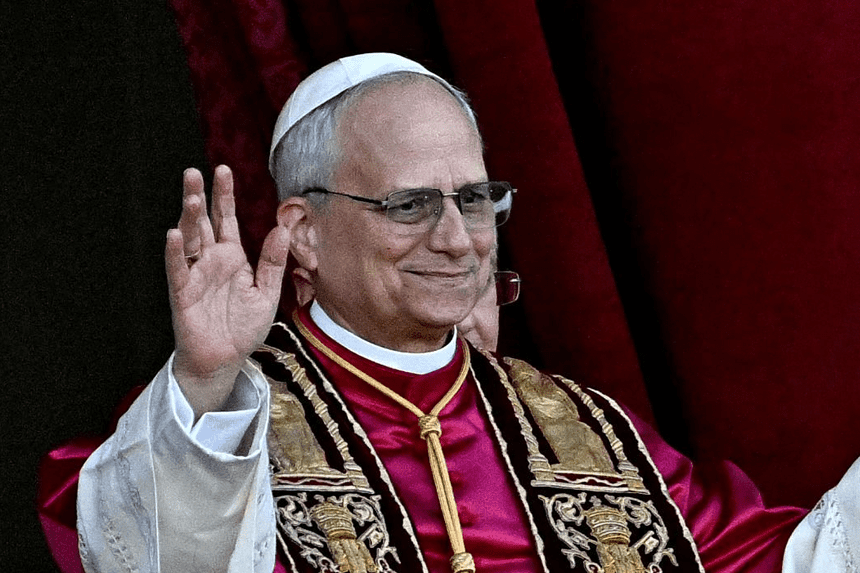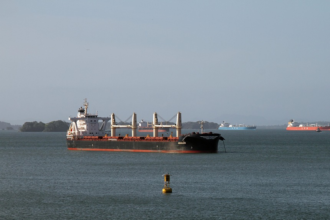Pope Leo XIV’s ascent marked a turning point for the Catholic Church historically. The Church is headed for the first time by someone referred to as the First American Pope from Peru. This historic election captures a changing Church’s worldwide identity.
Pope Leo XIV spoke in Italian initially from the Vatican balcony, then stopped and asked to deliver a few things in Spanish. Then he met his dear Diocese of Chiclayo in northern Peru, a place he regards as home. That small act caught the essence of a pope close to the people.
He has a more than symbolic relationship to Latin America. It comes from decades of walking alongside Peruvian villages providing spiritual direction and useful assistance. His appointment provides the Church with a servant-based, modest leader developed by experience and dedicated to compassionate leadership.
His trip from Chicago to Chiclayo started how?
Born in Chicago in 1955, Robert Francis Prevost came from a cosmopolitan household. His mother came from Spain; his father was of French and Italian ancestry. After studying canon law in Rome and theology in the United States, his road veered unexpectedly toward Peru.
He arrived at the Augustinian post in Chulucanas in 1985. Two years later, he relocated to Trujillo. He spent almost thirty years serving the United States and Peru, traveling between continents but always firmly committed to the areas he worked in.
Pope Francis chose him Bishop of Chiclayo in 2014. He became a formal Peruvian citizen by 2015. From then on, he started to consider Peru as his second motherland, “mi segunda patria”. His new identity molded his ministry and finally helped him to be ready to be the First American Pope from Peru.
How did his service in Peru shape his leadership?
The period Pope Leo XIV spent at Chiclayo turned into a major focus for his spiritual and pastoral growth. He was active, personable, and not a far-off bishop.
He brought relief during the terrible floods of 2022, not merely sent it. He handed meals, drove a white pickup truck across muddy roadways, and slept on a tiny cot on the ground. He ate sweet corn, cheese, and potatoes—what the residents ate. When the circumstances allowed him, though, he had a soft spot for Coca-Cola and carne asada.
People in the area loved his work. More importantly, it confirmed his reputation as a servant-leader—someone who lived among rather than above the people.
Recalling, local churchgoer Diana Celis said, “He would always say, ‘I came from Chicago to Chiclayo—the only difference is a few letters.'”
From Peru, this great humility and practical manner define his vocation now as the First American Pope. Read another article on Pope Francis’ Impact in the Philippines
During the political upheaval and pandemic, what did he do?
Pope Leo XIV acted as COVID-19 struck Peru severely. Widespread fear and death resulted from oxygen shortages. He organized a grassroots project to create two oxygen-producing plants rather than waiting for foreign funding.
He doubled down to make sure more lives might be spared, not content with the first success. Real leadership, he said, is about addressing actual issues.
He showed great grief in 2023 when violent anti-government demonstrations erupted throughout Peru after President Pedro Castillo was overthrown.
“Much sorrow and much pain,” he told local reporters, supporting the people in turmoil.
These gatherings demonstrated how the First American Pope from Peru was not just a spiritual leader but also an advocate for justice and compassion amid trying national times.
Has His Leadership Not Drawn Criticism?
Though his leadership is much sought after, his record is not perfect.
Three Peruvian women emerged in 2023, claiming sexual abuse by two priests going back to 2007. When they reported the abuse in 2022, they said the diocese neglected to start a thorough investigation.
Chiclayo’s church officials claimed the accused priests were put on precautionary suspension, and the matter had been forwarded to the Dicastery of the Vatican for the Doctrine of the Faith. But since the Vatican opted to close the matter following an initial investigation, no full canonical trial was conducted.
As he starts his papacy, this episode still causes controversy and great difficulty. Under worldwide attention, how he handles such delicate issues now will be crucial in determining the nature of his leadership.
Before he became Pope, what was His Role in the Vatican?
Pope Leo XIV occupied one of the most important roles in the Church even before his election: Prefect of the Dicastery for Bishops. Reviewing bishop selections worldwide was part of this responsibility, thus, it was a strong and broad position.
Further demonstrating his link to the area and its significance to the Vatican, he was also appointed President of the Pontifical Commission for Latin America.
He apparently begged Pope Francis to let him additional time in Peru, even though he had adjusted to his duties in Rome. That request captures the need in his heart to stay near the individuals he helped for many years.
From His Papacy, what expectations may the Church have?
Under the direction of the First American Pope from Peru, the Church is writing a fresh chapter. His close friendship with Pope Francis and common aim for a “Church with open doors” imply that changes will continue.
He is supposed to give inclusiveness priority, fight for the underprivileged, and connect with young people who have grown disenchanted. Those looking for a more rooted and responsive Church will find resonance in his practical approach and straightforward communication style.
Thomas Nicolini, a Peruvian student living in Rome, aptly said: “Chiclayo is gorgeous, but one of the areas that needs loads of optimism. Now I hope the new pope reignites the faith young people have lost and assists as many people as possible.
Finally, why is the First American Pope from Peru relevant?
A turning event for Catholics everywhere, not alone for Peruvians, is the election of Pope Leo XIV as the First American Pope from Peru.
His path from Chicago to Chiclayo and then to Rome represents a Church that listens, acts, and welcomes difference. Rooted in humility and distinguished by forceful action, his leadership approach offers fresh hope for the direction of world Catholicism.
Millions of people will look to his papacy not merely for direction but also a caring, inclusive, and unquestionably human view of faith.








